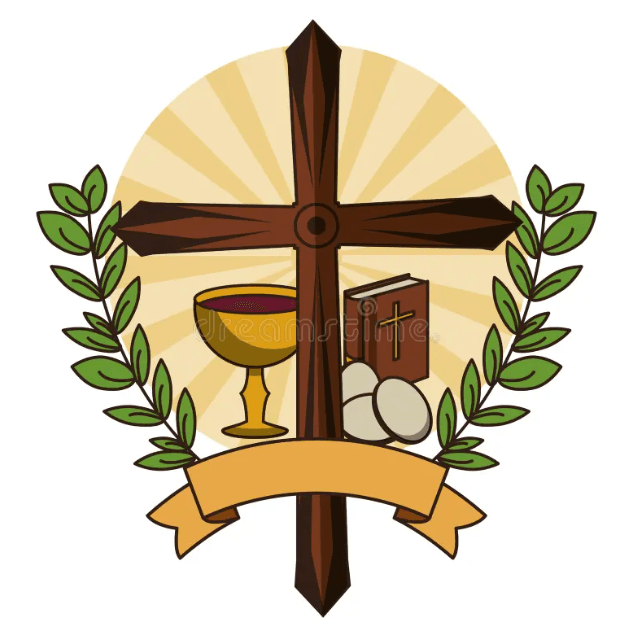Cuba, with its vibrant culture and rich history, has been shaped by a variety of influences, one of which is the Cuba National Religion, Catholicism. In this article, we'll delve into the depths of Cuba's religious landscape, focusing on its close ties with Catholicism. From its historical roots to its modern-day significance, we'll explore how Catholicism has become an integral part of Cuban identity.
Cuba, a picturesque island nation known for its stunning landscapes and vibrant culture, is deeply intertwined with the practice of Catholicism. For centuries, the Catholic faith has played a pivotal role in shaping the lives and traditions of the Cuban people.
Cuba National Religion’s Arrival in Cuba
The roots of Catholicism in Cuba can be traced back to the early days of Spanish colonization. With the arrival of Spanish explorers, Catholic missionaries began their efforts to spread the faith among the indigenous population. The syncretism that followed led to a unique blend of Catholic beliefs and traditional Cuban practices.
Cuba National Religion: Influence on Cuban Culture
Catholicism's influence on Cuban culture is profound and far-reaching. It has not only impacted religious practices but has also left an indelible mark on art, music, and literature. Many of Cuba's festivals and celebrations are rooted in Catholic traditions, showcasing the seamless integration of faith into daily life.
Cuba’s Religious Landscape Today
In modern Cuba, Catholicism remains a dominant force in the religious landscape. The majority of Cubans identify as Catholics, and the church continues to be a place of solace and community gathering. Despite challenges, Catholicism maintains a strong presence, exemplifying its enduring significance.
Cuba National Religion and Social Change
Throughout history, Catholicism has played a role in advocating for social change in Cuba. From the fight against colonial oppression to the pursuit of social justice, Catholic leaders have often been at the forefront of movements seeking a better future for the Cuban people.
Religious Freedom in Cuba
Cuba's religious landscape is not limited to Catholicism alone. The nation upholds a sense of religious freedom, allowing various faiths to coexist harmoniously. This diversity enriches the cultural fabric of Cuba and highlights the country's commitment to pluralism.
Catholicism’s Role in Cuban Festivals
Catholicism's influence is particularly evident during Cuban festivals and celebrations. Events like the Feast of San Lazaro and the Festival of the Virgin of Cobre attract thousands of pilgrims, showcasing the deep connection between faith and culture.
Cuba’s Religious Architecture
The architectural marvels of Cuba also reflect its Catholic heritage. From ornate cathedrals to quaint chapels, these structures stand as testaments to the enduring devotion of the Cuban people.
Catholicism’s Interaction with Other Beliefs
Cuba's religious landscape is characterized by a rich tapestry of beliefs. The syncretic practices that emerged during colonization led to the blending of Catholicism with African and indigenous spiritual traditions, giving rise to unique and vibrant syncretic religions.
Challenges Faced by Cuba National Religion
Despite its resilience, Cuban Catholicism has faced challenges over the years. Political shifts and periods of tension have at times strained the relationship between the church and the state, requiring adaptability and steadfastness from the faithful.
Catholicism and Cuban Art
Catholicism's influence on Cuban art is profound, with religious themes often woven into artistic expressions. Paintings, sculptures, and literature serve as powerful mediums through which spiritual ideas are conveyed.
Cuba’s Spiritual Tourism
Cuba's religious heritage also attracts spiritual tourists from around the world. Pilgrims and travelers visit sites of religious significance, seeking not only cultural enrichment but also a deeper connection with spirituality.
Catholicism’s Resilience Through History
Cuban Catholicism's ability to endure through turbulent times speaks volumes about its importance to the nation's identity. It has weathered storms of change while remaining a steadfast source of guidance and inspiration.
Cuba National Religion: The Future
As Cuba navigates the complexities of the modern world, Catholicism will likely continue to be a cornerstone of its cultural and spiritual landscape. Its ability to adapt while preserving its core teachings ensures a lasting legacy.
Conclusion
Cuba's national religion, Catholicism, stands as a testament to the enduring power of faith and culture. From its historical roots to its vibrant presence today, Catholicism has woven itself into the fabric of Cuban identity, enriching every aspect of life on this captivating island.
FAQs
- Is Catholicism the only religion in Cuba?
No, while Catholicism is the dominant religion, Cuba embraces religious diversity, allowing various faiths to coexist.
- What role did Catholicism play in Cuba's fight for independence?
Catholic leaders played a significant role in advocating for social justice and independence from colonial rule.
- Are Cuban festivals influenced solely by Catholic traditions?
Cuban festivals often blend Catholic rituals with indigenous and African influences, creating unique and vibrant celebrations.
- How has Cuban art been shaped by Catholicism?
Catholicism's themes and symbols have inspired countless works of art, adding spiritual depth to Cuba's creative expressions.
- What does the future hold for Cuban Catholicism?
Despite challenges, Cuban Catholicism is likely to endure as a vital component of the nation's cultural and spiritual identity.
References
- "Religion in Cuba." (n.d.). Retrieved from World Atlas: https://www.worldatlas.com/articles/religion-in-cuba.html
- Pérez, L. A. (2006). Cuba: Between Reform and Revolution. Oxford University Press.
- Roig de Leuchsenring, E. (2008). La religión en Cuba: La Habana, 1800-1835. Editorial de Ciencias Sociales.
- "Catholicism in Cuba: An Overview." (n.d.). Retrieved from Minority Rights Group International: https://minorityrights.org/country/cuba/
